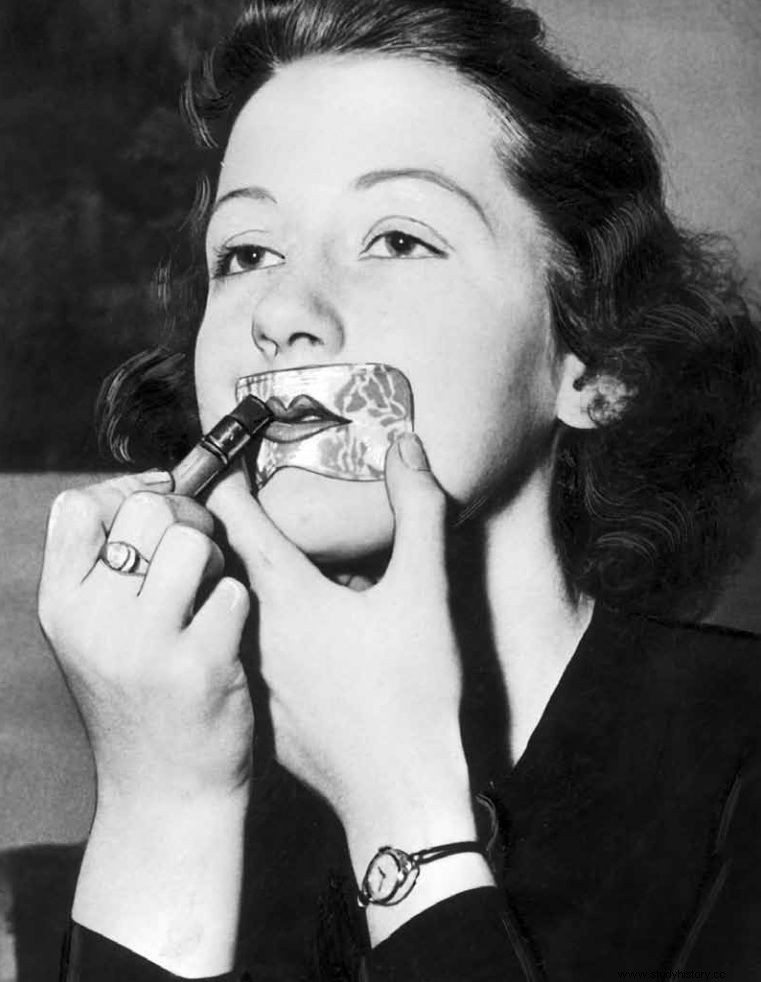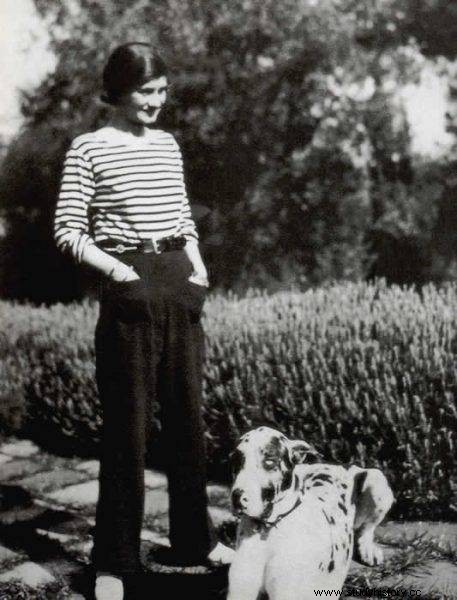Defiant, vulgar, flashy - this is the stereotypical image of a prostitute. It is hard to believe that the most important trends in fashion and beauty were initiated by women of light morals. Are you also unconsciously following them?
The oldest profession in the world does not enjoy a good reputation among the society. Prostitutes are outrageous and at the same time… inspiring. Painters, writers, and filmmakers devoted a lot of space to fallen ladies in their art. The image of a lightweight woman is often a source of inspiration for fashion designers.
One of the most famous wizards, Gianni Versace, confessed in an interview that as an adolescent boy he was fascinated by prostitutes from his hometown in southern Italy. A few years ago, the French fashion house Louis Vuitton shocked its clients with an advertising film in which famous models played the roles of Parisian courtesans.
It is worth putting aside the stereotypes about the provocative, flashy or even tacky appearance of women from under the street lamps for a moment and look at them as trendsetters. Contrary to appearances, we owe them a bit!
Panties - cursed underwear
Today it is difficult for us to imagine it, but until the beginning of the 20th century, panties were considered an anathema item of clothing. A decent woman paid no attention to her private parts at all. Long layered dresses, petticoats, and coats carefully concealed anything that should not be exposed to the public, so no one could see what the elegant lady wore under her skirt.
According to the morality of our distant great-grandmothers, the parts of the body between the waist and the knees were subject to a pact of silence - we learn from the book "Historia Stroje" by Maguelonne Toussaint-Samat. The panties were mainly worn by cancan dancers and courtesans who reached for their underwear to excite their customers (and their predecessors in ancient Rome did likewise).
Catherine de Medici, the queen of France ruling in the sixteenth century, ordered her courts to wear special underpants for horse riding, but this custom was lost with the death of the ruler. Panties without legs came to our wardrobe for good only in the 20th century.
Make-up - prostitutes first, then movie actresses
Sensual smokey eye makeup, which has not gone out of fashion since the 1990s, was born for the film. Silent movie actresses needed a stronger emphasis on the eyes so that viewers could read their emotions on their faces. The seductive image of the stars was quickly picked up by emancipated women.
According to Aleksandra Zaprutko-Janicka in the book "Beauty without preservatives. Beauty secrets of our great-grandmothers ”even at the end of the 19th century, the expressive way of emphasizing the beauty was considered vulgar. Lipstick lips, flushed cheeks and tinted eyebrows were associated with the image of a prostitute. Lipstick, similar to the one we know now, was not available for sale until 1915.
Stripes - the devil wears stripes
In the early Middle Ages, the devil was looked for everywhere, even in the closet. It was believed then that the stripes were a devilish pattern. Striped costumes were usually worn by prostitutes, executioners, lepers and other people who exist on the margins of social life. Currently, stripes are a symbol of nautical style and pin-up, and thanks to Coco Chanel they are considered a fashion classic.

Nothing ruins makeup like badly painted lips. In the 1930s, an untrained hand could be supported with a special template. Such a template allowed to obtain the desired shape thanks to two strokes of the lipstick. The photo and caption are from our newest book, Beauty Without Preservatives.
Musk - the smell of sin
Oriental perfumes with deep, sensual scent notes bring a breath of exoticism to our home. It is hard to believe that the aroma of musk aroused much controversy at the beginning of the last century, because such perfumes were usually chosen by prostitutes as an erotic lure. Decent women smelled of floral compositions, mostly made of one ingredient.
Musk was introduced to salons only in 1925 by the French brand Guerlain, creating the perfume "Shalimar". It is now the second most popular fragrance in the world, but even 90 years ago in Paris it was said that there are three things a decent woman shouldn't do:smoke cigarettes, dance tango and smell Shalimar.
Coco Chanel, who searched for the scent of a woman for her perfumes, also used the controversial musk. This is how the famous "Chanel No 5" was created - today considered a symbol of good taste and elegance.
Blonde Hair - Has Blondes Always Had More Fun?
The shades of blonde have not gone out of fashion for years, and women patiently undergo coloring treatments in hairdressing salons. The fashion for blonde was already in the ancient times. Roman prostitutes persistently lightened their dark hair, not least because it was already believed that men preferred blondes - it was simply required by law.
Women who engaged in prostitution had to be different from others. It is worth remembering that in ancient Rome, prostitution was not a condemned profession, therefore, among the wider strata of society, blonde became fashionable.

The belts, which were previously worn mainly by sailors and prostitutes, were introduced into fashion by Coco Chanel (source:public domain).
Richer citizens rubbed golden powder on their heads, and less wealthy ladies had to use a mixture made of leeches and vinegar. They smeared such grease on their hair and spent many hours in the sun. The less troublesome solution was to wear a blonde wig.
Contrasting colors - hot contradictions instead of fur
Today we can introduce all the colors of the rainbow into our wardrobes. However, for many centuries, only prostitutes wore bright colors juxtaposed with each other. Many privileges have been denied to women who engaged in harlotry in different eras and cultures.
In 14th-century London, prostitutes were not allowed to wear furs or even jewelry under the threat of imprisonment. To stand out from the crowd, they wore bright, flashy outfits, often decorated with colorful ribbons.
***
Dozens of reliable recipes. Affordable recipes. And this:a fascinating story about how Polish women cared for themselves in pre-war Poland. Buy your own copy of Aleksandra Zaprutko-Janicka's new book today, entitled "Beauty without preservatives. Beauty secrets of our great-grandmothers ”
Bibliography:
- Piu Marie Eatwell, F is France:A Curious Cabinet of French Wonders , Thomas Dunne Books 2016.
- Rebecca Guenard, Hair Dye:A History , The Atlantic, January 2, 2015.
- Marek Karpiński, The oldest profession in the world. History of prostitution , Iskry 2010.
- Ancient Roman Dress, Roman Empire.
- Maguellone Toussaint-Samat, The History of the Dress , W.A.B. 1998.
- Michel Pastoureau, The history of stripes and striped fabrics , Oficyna Naukowa 2004.
- Michał Zaczyński, Fashion under the lantern , Newsweek.pl September 13, 2009.
- Aleksandra Zaprutko-Janicka, Beauty without preservatives , CiekawostkiHistoryczne.pl 2016.
